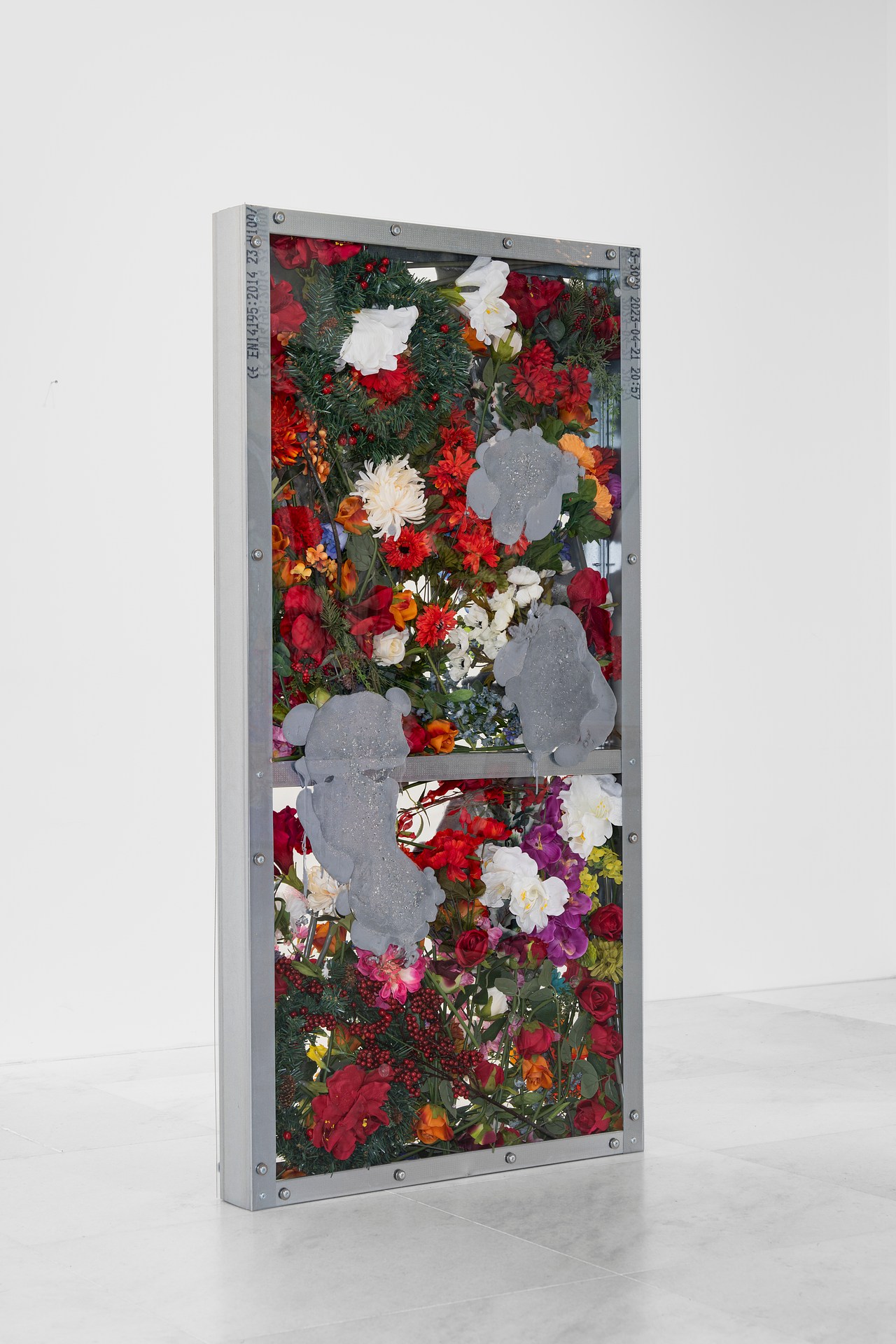Fathers #18 and Fathers #27
2006 - Photography (Photography)
30 x 45 cm
Taysir Batniji
Fathers #18 and Fathers #27 is part of a series of photographs and videos made in recent years in Gaza. Batniji addresses the representation of the over-identified human and physical space with the geographical and political situation in the region. He distinguishes himself from the fictions that have been previously created in the Middle East and offers a quieter and more retained vision of the of the intertwining tensions and oppositions in this area. Fathers offers an incomplete inventory of portraits that we often see framed and hanging on the walls of cafes, stalls, shops, workshops and other workplaces in Gaza and the Middle East. Often old and yellowed, sometimes dusty and slanted, these portraits rarely have links to the current owner and they relate instead to the person who founded the place and who left long ago. Since these places are overloaded with symbols and signs of presence (s) and disorder (s) but devoid of human inhabitants, or their owners, they become a particular paradigm of some sort of “still life”. This kind of places seem full (of products, objects, memories and signs of life) and empty at the same time. By overlooking different temporalities, memory and regards, or by being petrified, like ruins after a disaster that nobody will ever know, they belong to the present and to the past. The power of these images lies in what they hold as much as in what they reveal.
The work of Taysir Batniji, a Palestinian artist born in Gaza shortly before the 1967 war and the Israeli occupation, is tainted with manifestations of impermanence and itinerancy, belonging and uprooting, personal memories and historical events. Engaging in a number of different formats, including drawing, installation, photography, video and performance, Batniji has developed a strong, coherent body of work, which observes and treats with a certain sense of poetry, oneirism and sometimes acridity, the topics of migration and identity. Rooted in social and concrete realities, his work stretches the frame of documentary practices to question methods of depiction and narrative making. As Batniji states, “my works are perhaps less concerned with a specific topic or situation, and moreover an inquiry into representation itself” in a way that aims to explore and demystify the liminal space between reality and its representation.
Colors:
Related works sharing similar palette
» see more
Related artist(s) to: Taysir Batniji » Nazgol Ansarinia, » Wael Shawky, » Akram Zaatari, » Alessandro Petti, » Claire Fontaine, » Etienne Chambaud, » Jack Persekian, » Joana Hadjithomas, » Khalil Joreige, » Lara Favaretto
» see more

© » KADIST
Claire Fontaine
2006Foreigners Everywhere is a series of neon signs in several different languages...

© » KADIST
Étienne Chambaud
2010In 2010, Kadist Art Foundation, David Roberts Foundation and Nomas Foundation successively presented an exhibition of the work of Etienne Chambaud in collaboration with Vincent Normand: The Siren’s Stage / Le Stade des Sirènes...

© » KADIST
Akram Zaatari
1957“These are negatives that were scratched because of a jealous husband from the Baqari family, who never let his wife out by herself...

© » KADIST
Nazgol Ansarinia
2013In the early 2000s, as urban redevelopment accelerated and intense construction significantly diminished public space in Tehran, state-funded murals began to represent imaginary landscapes on building facades...
Related works found in the same semantic group
» see more

© » KADIST
Diamond Stingily
2017Dad is Byron is an audio work produced in collaboration between Diamond Stingily and her father, the house musician Byron Stingily...

© » KADIST
Adrian Melis Sosa
2015Shot a few months before the USA and Cuba restored diplomatic relations in 2015, The New Man and My Father looks into the quiet aftermath of one family’s individual experience of the Cuban Revolution (1953-1959)...

© » THE GUARDIAN
Jeremy Grayson obituary | Photography | The Guardian Skip to main content Skip to navigation Skip to navigation Jeremy Grayson photographed Shirley Bassey, Sammy Davis Jr and Marlon Brando Jeremy Grayson photographed Shirley Bassey, Sammy Davis Jr and Marlon Brando Obituary Jeremy Grayson obituary My father, Jeremy Grayson, who has died aged 90, was a professional photographer who worked over the years for clients including the BBC, Radio Times, Talk of the Town and the London Palladium...





